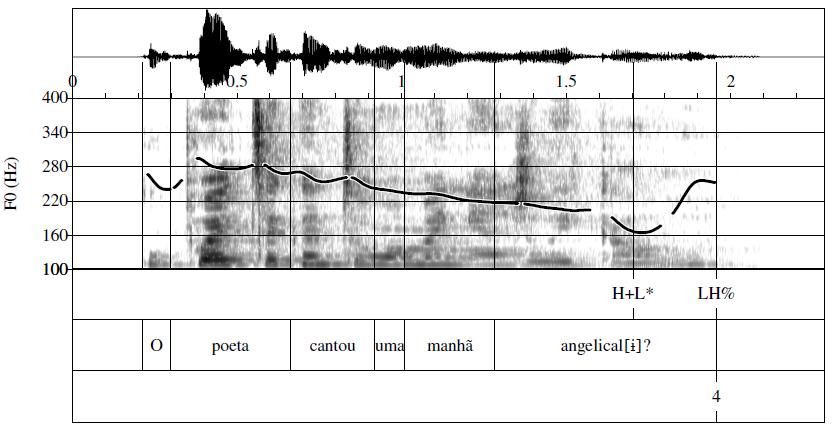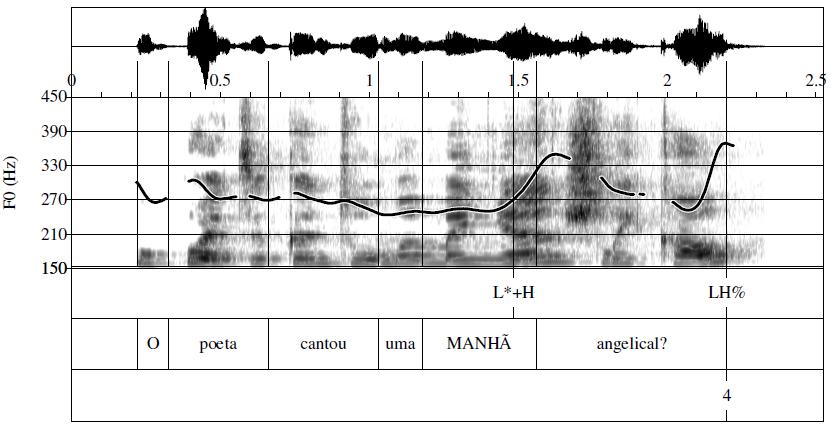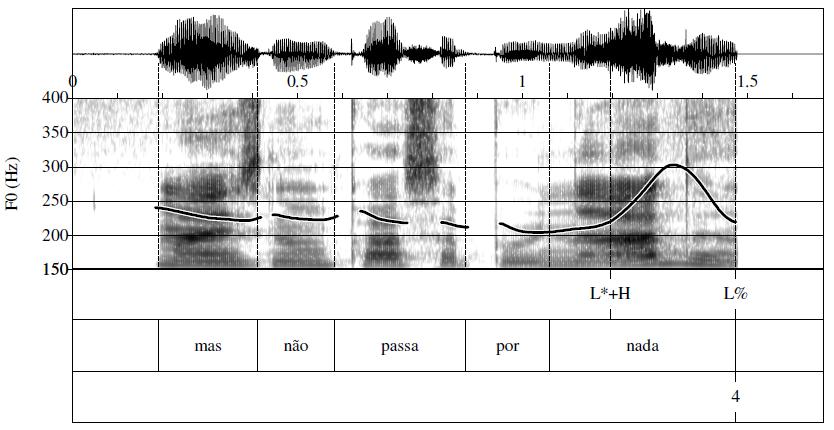Tools for the transcription of Portuguese prosody
Modality
We will now focus on the third main function of prosody, by showing how intonation conveys the distinction between utterance types, such as in the different modalities of declarative, interrogative or imperative utterances. Indeed, the distinction between utterance types is among the phrase-level meanings conveyed by intonation.
Across varieties of Portuguese, these distinctions are usually achieved by means of the nuclear contour, that is the pitch accent associated to the nuclear syllable and any following tonal events on subsequent post-tonic syllable(s). In fact, pitch accent contrasts are the most common means to mark differences in sentence type and pragmatic meaning, as Portuguese seems to make a more restricted use of tonal boundaries than other (Romance) languages. The examples in (9) and (10) show a contrast in nuclear pitch accent that distinguishes between information-seeking and counterexpectational yes-no questions in European Portuguese [H+L* LH% vs. L*+H LH%]. (11) and (12) illustrate the distinction between an information-seeking yes-no question and a broad focus declarative in Brazilian Portuguese [H+L* L% vs. L*+H L%].
For the modality function of intonation in Portuguese, see, among others: Vigário & Frota 2003; Cruz 2013; Frota 2014; Frota, Cruz, Fernandes-Svartman, Collischonn, Fonseca, Serra, Oliveira & Vigário 2015; Frota & Moraes 2016.
We will now focus on the third main function of prosody, by showing how intonation conveys the distinction between utterance types, such as in the different modalities of declarative, interrogative or imperative utterances. Indeed, the distinction between utterance types is among the phrase-level meanings conveyed by intonation.
Across varieties of Portuguese, these distinctions are usually achieved by means of the nuclear contour, that is the pitch accent associated to the nuclear syllable and any following tonal events on subsequent post-tonic syllable(s). In fact, pitch accent contrasts are the most common means to mark differences in sentence type and pragmatic meaning, as Portuguese seems to make a more restricted use of tonal boundaries than other (Romance) languages. The examples in (9) and (10) show a contrast in nuclear pitch accent that distinguishes between information-seeking and counterexpectational yes-no questions in European Portuguese [H+L* LH% vs. L*+H LH%]. (11) and (12) illustrate the distinction between an information-seeking yes-no question and a broad focus declarative in Brazilian Portuguese [H+L* L% vs. L*+H L%].
| (9) |
 |
(10) |
 |
|---|---|---|---|
| (11) |
 |
(12) |  |
For the modality function of intonation in Portuguese, see, among others: Vigário & Frota 2003; Cruz 2013; Frota 2014; Frota, Cruz, Fernandes-Svartman, Collischonn, Fonseca, Serra, Oliveira & Vigário 2015; Frota & Moraes 2016.




